Audio Textify is a Chrome extension that revolutionizes content creation and consumption by integrating advanced AI capabilities directly into your browser. It allows users to effortlessly transcribe, summarize, translate, and generate creative content from both audio and video sources. With support for 99 languages and a range of powerful features, Audio Textify enhances productivity and accessibility across various linguistic backgrounds.
Audio to Text
A Chrome extension for transcribing audio and video files.
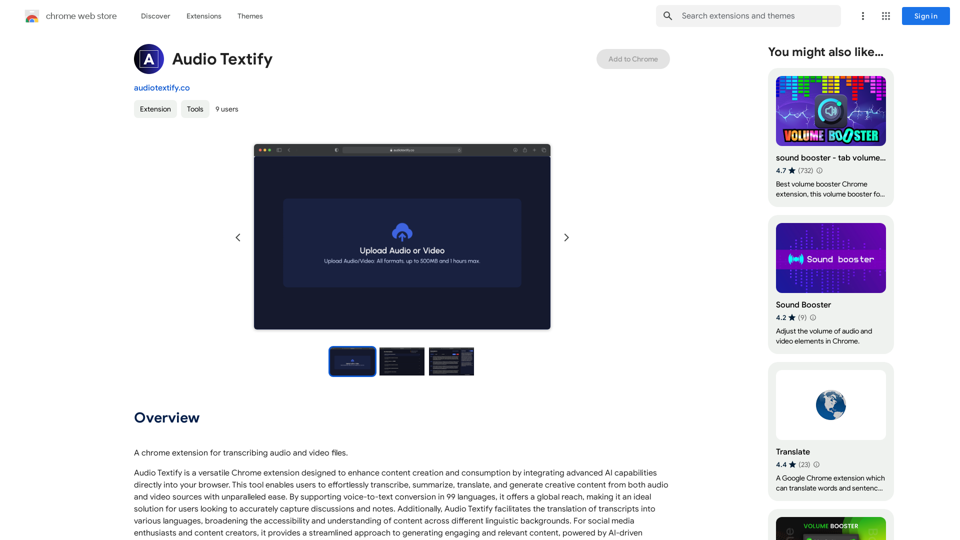
Introduction
Feature
Transcription
Audio Textify offers voice-to-text conversion in 99 languages, making it an ideal solution for accurately capturing discussions and notes.
Translation
The platform enables translation of transcripts into various languages, broadening content accessibility and understanding across different linguistic backgrounds.
Content Generation
Audio Textify streamlines the process of generating engaging and relevant content, powered by AI-driven creativity.
Analysis
The tool provides insightful analysis of transcripts by:
- Summarizing content
- Identifying major themes
- Extracting keywords
This aids in quick understanding and organization of key information.
Multi-language Support
Audio Textify supports voice-to-text conversion in 99 languages, catering to a global user base.
Privacy Protection
User data is handled in accordance with the platform's privacy policy, ensuring that information is not used for training purposes.
Flexible Usage
Users can access basic features for free, with the option to subscribe for additional benefits and extended access beyond free usage limits.
FAQ
What is Audio Textify?
Audio Textify is a Chrome extension that enables users to transcribe, summarize, translate, and generate creative content from audio and video sources using advanced AI capabilities.
How many languages does Audio Textify support?
Audio Textify supports voice-to-text conversion in 99 languages.
Can I use Audio Textify for free?
Yes, every user can utilize Audio Textify's basic features for free, subject to usage limits. Subscription options are available for extended access.
Does Audio Textify generate images?
No, Audio Textify is primarily designed for text-based content creation and analysis, not image generation.
How does Audio Textify handle user data?
Audio Textify handles user data in accordance with its privacy policy, ensuring that your data will not be used for any training purposes.
Latest Traffic Insights
Monthly Visits
193.90 M
Bounce Rate
56.27%
Pages Per Visit
2.71
Time on Site(s)
115.91
Global Rank
-
Country Rank
-
Recent Visits
Traffic Sources
- Social Media:0.48%
- Paid Referrals:0.55%
- Email:0.15%
- Referrals:12.81%
- Search Engines:16.21%
- Direct:69.81%
Related Websites
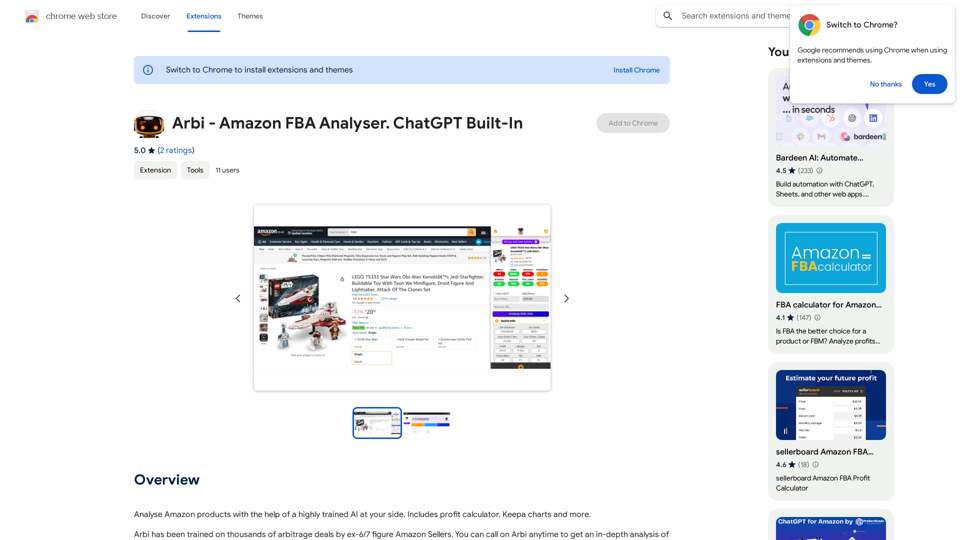
Analyze Amazon products with the help of a powerful AI assistant. Features include a profit calculator, Keepa charts, and more.
193.90 M

Beautiful photos that tell your story. Ready for Tinder, Instagram, Bumble, TikTok, Hinge, Grindr, Facebook, Snapchat.
38.27 K
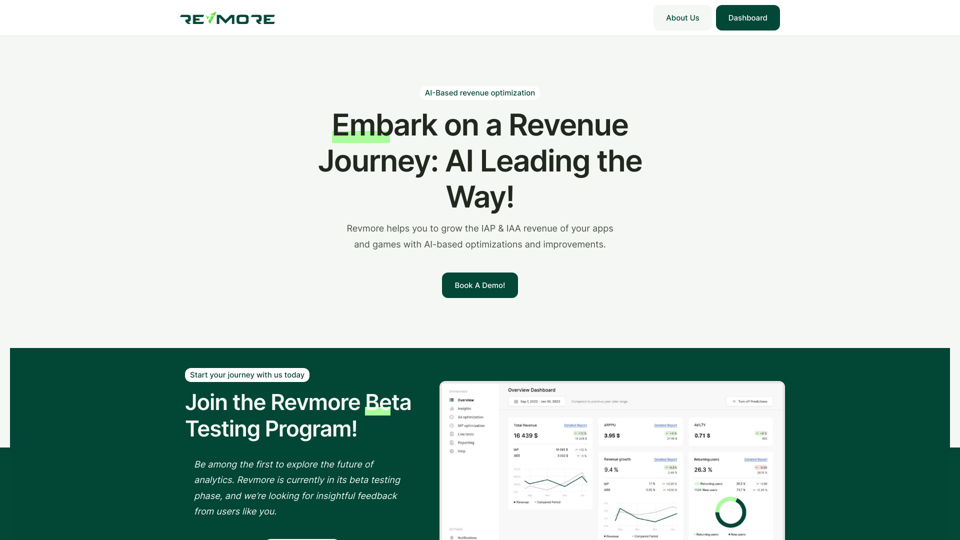
AI-Based Revenue Optimization Embark on a Revenue Journey: AI Leading the Way! Revmore helps you to grow the in-app purchase (IAP) and in-app advertising (IAA) revenue of your apps and games with AI-based optimizations and improvements. Book A Demo! Elevate your revenue with our AI magic. Explore our diverse optimization solutions, meticulously crafted to meet unique demands. In-app Purchase (IAP)
0
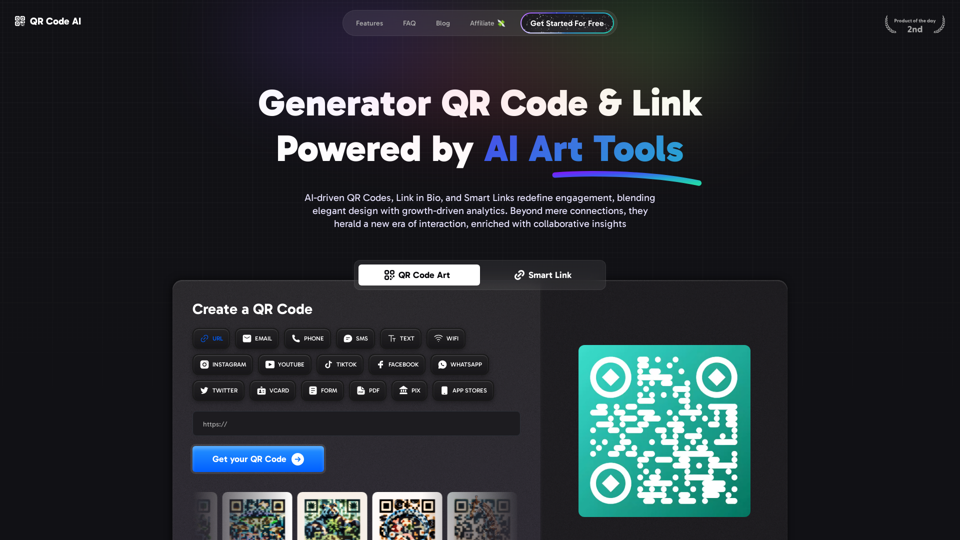
Free QR Code AI Art Generator (2024) • Scanner, Link in Bio, Smart Link, Analytics, Workspace, Monkey, Tiger
Free QR Code AI Art Generator (2024) • Scanner, Link in Bio, Smart Link, Analytics, Workspace, Monkey, TigerCreate an artistic QR Code for free, featuring images, logos, colors, and shapes. Select from templates that link to your website, email, WiFi, URL, phone, UPI, PIX, or Rick Roll. Use tools like Canva, Adobe, or Google to design. Compatible with Android and iOS devices. A top alternative to QR Monkey, Tiger, Chimp, and Unitag.
194.49 K
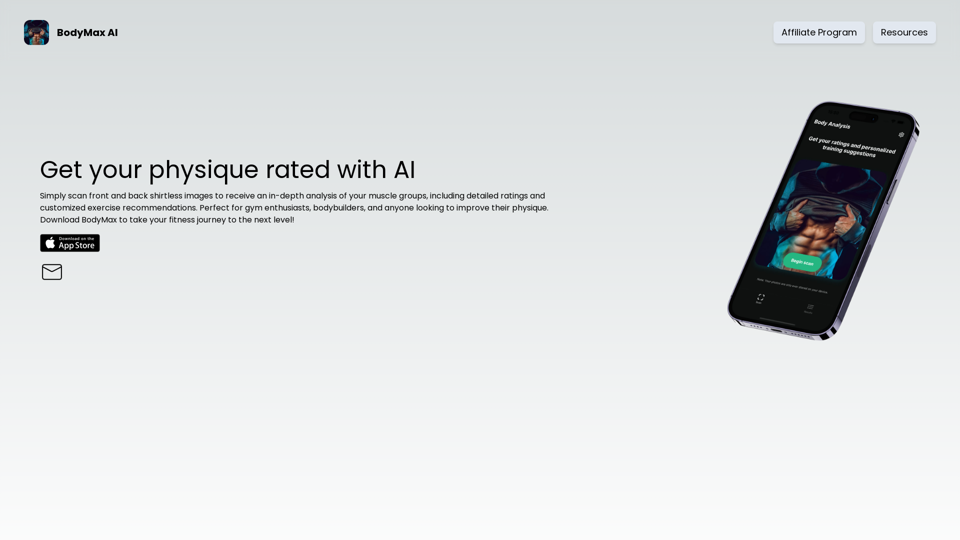
BodyMax AI - Get Your Physique Rating with our AI Body Scanner
BodyMax AI - Get Your Physique Rating with our AI Body ScannerEnhance your workouts with Artificial Intelligence! Get precise ratings for each muscle group, track your progress, and achieve your bodybuilding goals. Perfect for gym enthusiasts and bodybuilders. Download BodyMax to take your fitness journey to the next level!
283
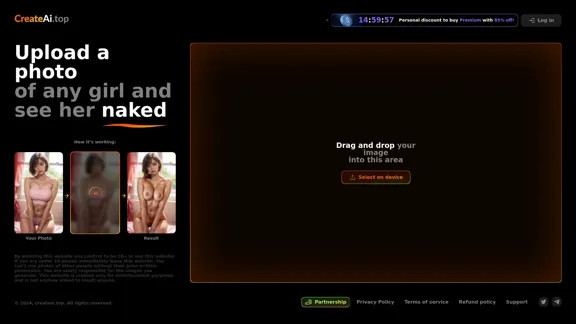
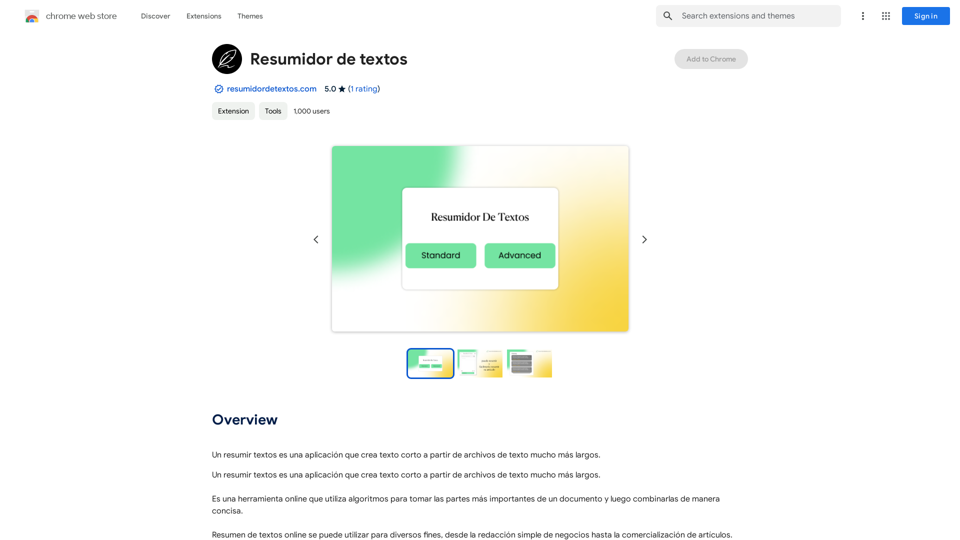
-akpofpnbjlhfdmcmnolgbpagpdkfkbef-thumbnail-1720093897.png)